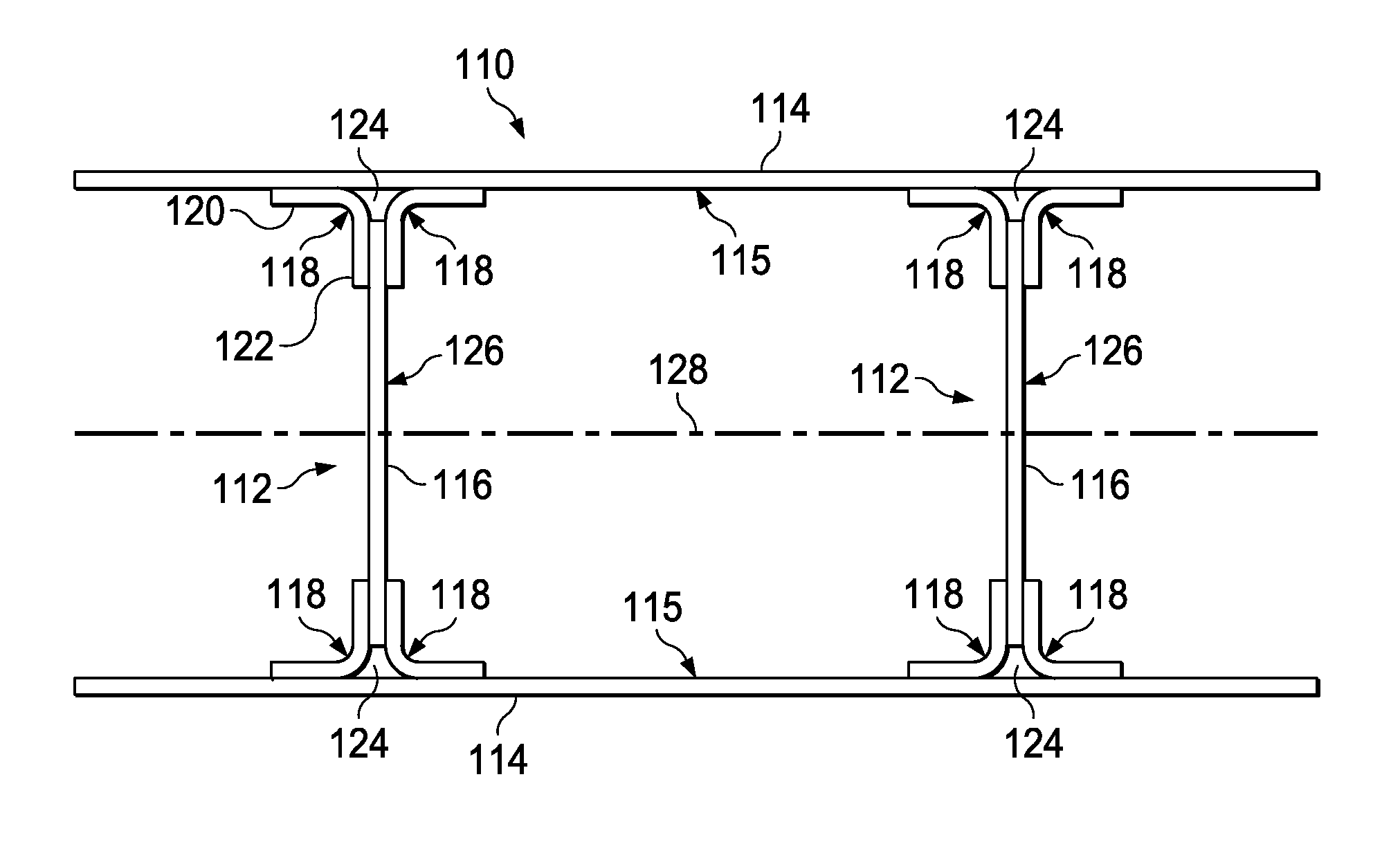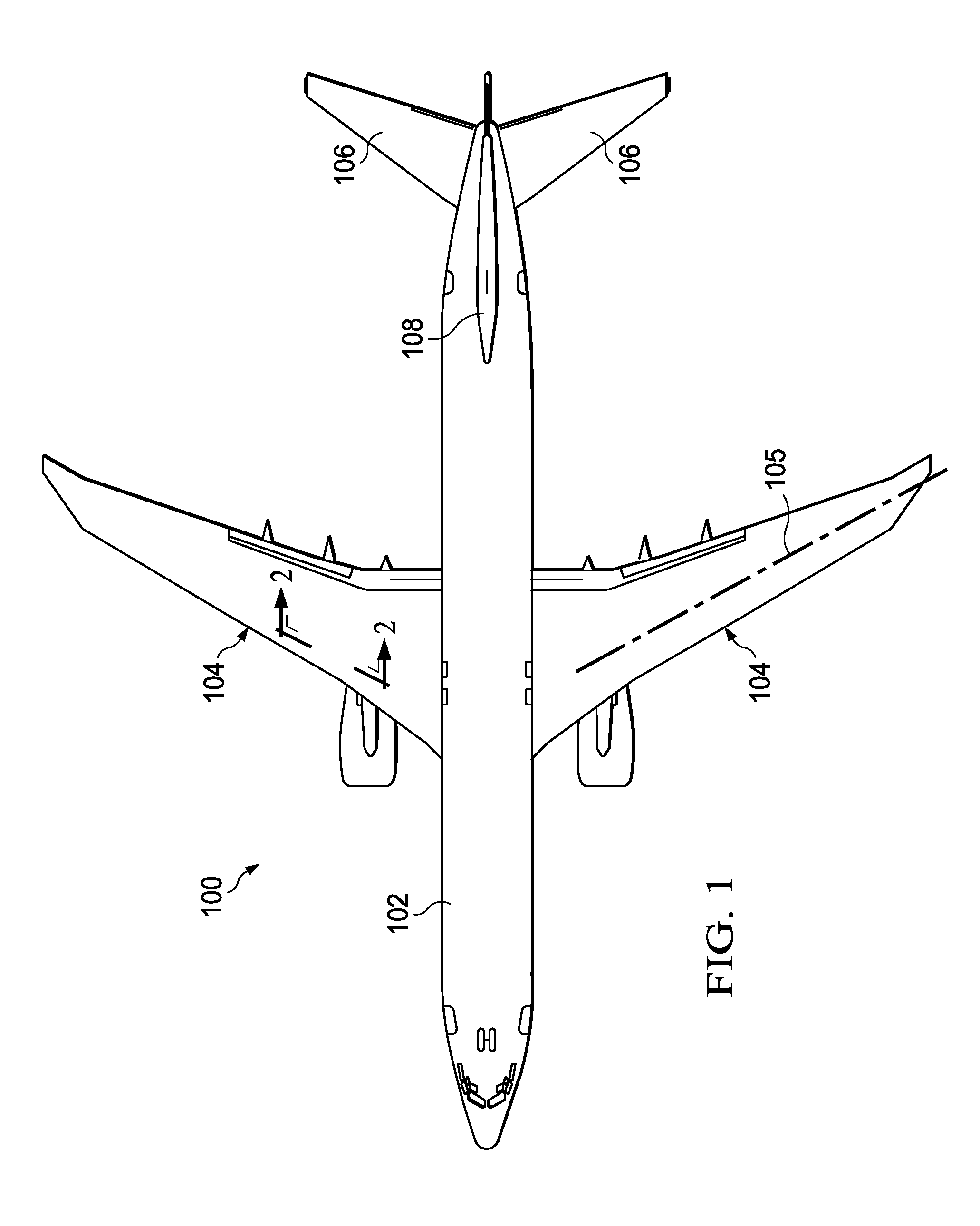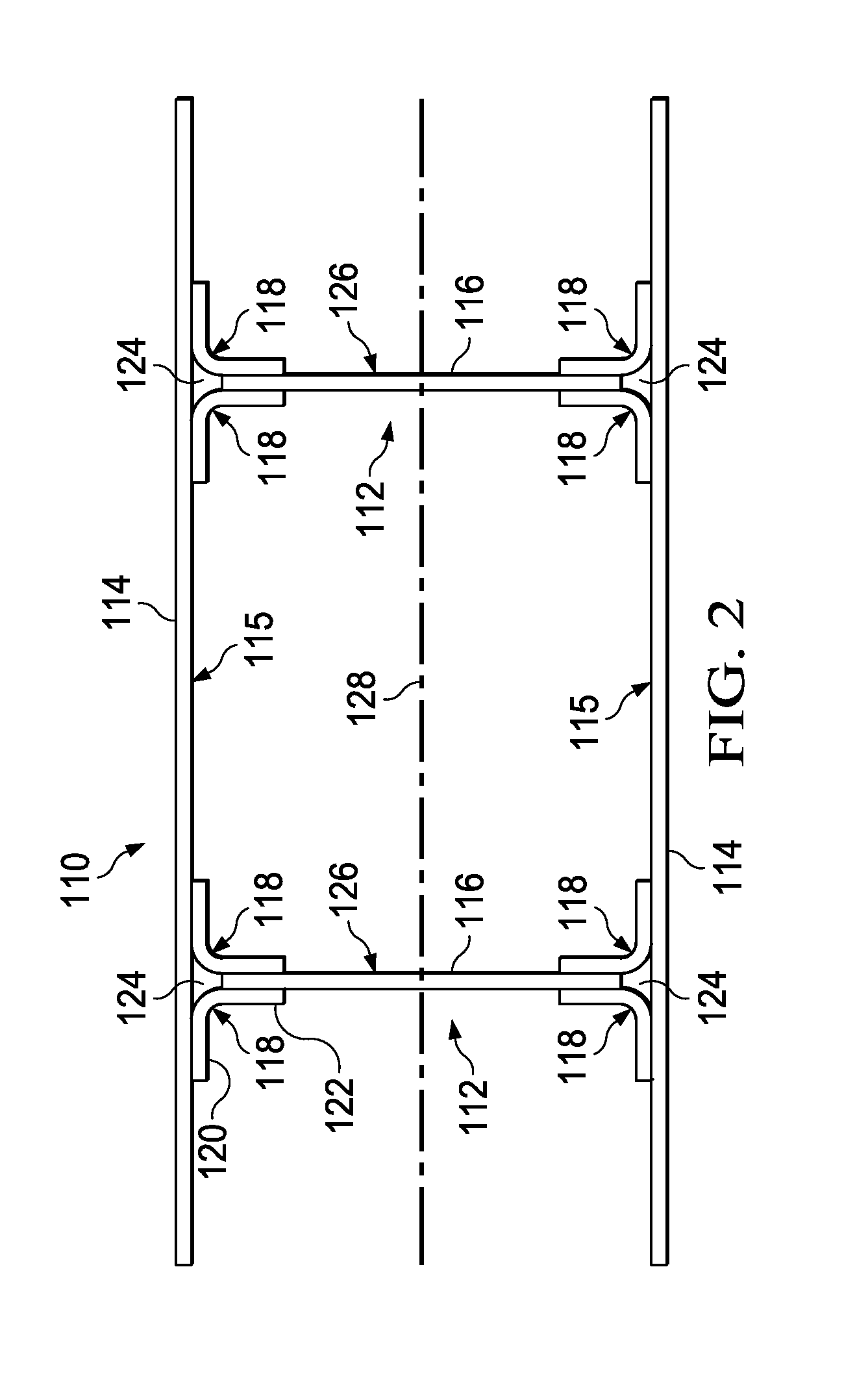Method and apparatus for fabricating large scale integrated airfoils
a technology of airfoil and airframe, which is applied in the field of large-scale integrated airfoil fabrication methods and equipment, can solve the problems of increased part count, high labor cost of fastener drilling and assembly, and use of fasteners, and achieves the effects of reducing or eliminating fasteners, low cost, and minimal tooling
- Summary
- Abstract
- Description
- Claims
- Application Information
AI Technical Summary
Benefits of technology
Problems solved by technology
Method used
Image
Examples
Embodiment Construction
[0061]Referring first to FIG. 1, an aircraft 100 includes a fuselage 102 having one or more airfoils, which in the illustrated example comprise wings 104, horizontal stabilizers 106 and vertical stabilizer 108. FIG. 2 illustrates a typical airfoil box 110 which may form a portion of, for example and without limitation, each of the wings 104 of the aircraft 100 shown in FIG. 1. The airfoil box 110 extends in the span-wise direction 105 shown in FIG. 1 (into the paper in FIG. 2) of a wing 104, and broadly includes one or more spars 112 sandwiched between a pair of outer skins 114. The spars 112 as well as the outer skins 114 may each comprise a fiber reinforced laminated composite, such as, without limitation, carbon fiber epoxy.
[0062]The spars 112 may be spaced apart in the chord-wise direction 128 a suitable distance to meet design requirements. Each of the spars 112 includes a spar web 116 lying in a plane extending traverse to the wing skins 114. Each of the spars 112 further incl...
PUM
| Property | Measurement | Unit |
|---|---|---|
| pressure | aaaaa | aaaaa |
| compaction force | aaaaa | aaaaa |
| pressure | aaaaa | aaaaa |
Abstract
Description
Claims
Application Information
 Login to View More
Login to View More - R&D
- Intellectual Property
- Life Sciences
- Materials
- Tech Scout
- Unparalleled Data Quality
- Higher Quality Content
- 60% Fewer Hallucinations
Browse by: Latest US Patents, China's latest patents, Technical Efficacy Thesaurus, Application Domain, Technology Topic, Popular Technical Reports.
© 2025 PatSnap. All rights reserved.Legal|Privacy policy|Modern Slavery Act Transparency Statement|Sitemap|About US| Contact US: help@patsnap.com



